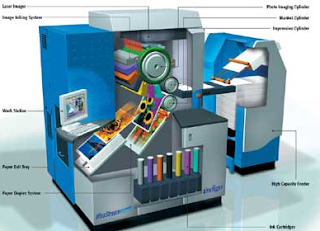Today's technology gives you nothing but quick, affordable prints made in high-quality. However, with modern technology it is now possible to deliver quality and quantity of images in no time.
The competition world cannot compromise on quantity and quality, and cannot just compromise on anything “that will be done after some time”. Hence, offset printing process is the best suitable choice to accommodate such pressing demands.
Why need offset printing?
Offset printing offers more efficient and refined printing operations and generates quality images. It is considered the most common and practical printing processed ever developed and often used for commercial prints. Offset printing utilizes commercial printers to meet the standards of desired prints.
Offset printing dubai is commonly used when there is a need of dispensing high-volume, but quality prints in a short span of time. This specific printing technique is widely used for corporate, commercial and personal printing. With the help of offset printers, it is possible to use business cards, calendars, brochures, catalogs and posters among the multitude of products and services.
How does it work?
Offset printers’ uses multiple rollers and cylinders, where the sliding surface does not come in direct contact with the paper. The inks are used in “offset” mode on rubber blanket that prints the image on a paper. This is how it works, no direct link of paper and ink can print amazing images.
Here are some great benefits of using high-resolution offset printing:
High-Resolution image printing:
Offset printing produces quality prints with clarity and image details. The process of printing used in offset ensures the inks adhere to the paper strongly to provide the quality of a print. The colors look real and vibrant at the paper no matter what kind of paper is used for prints. Offset printing not only offers quality in images, but texts can be printed very well.
Chromaticity of image:
Chromaticity can increase the quality of prints and in offset printing it is obtained with great precision. An integration of four colors is used to render layers of multiple colors on the paper to provide vibrant color printing. This technique is considered ideal to provide prints for commercial usage because of the great quality it provides in prints.
Printing methodology:
The CMYK – Cyan, Magenta, Yellow and black provide a kaleidoscopic array of color which is essential to create better contracts and a brightening of colors. This is especially needed when printing postcards and posters.
A business can enjoy uncountable benefits of offset printing and with the help of a quality offset printing press, it is possible to always get great benefits.

